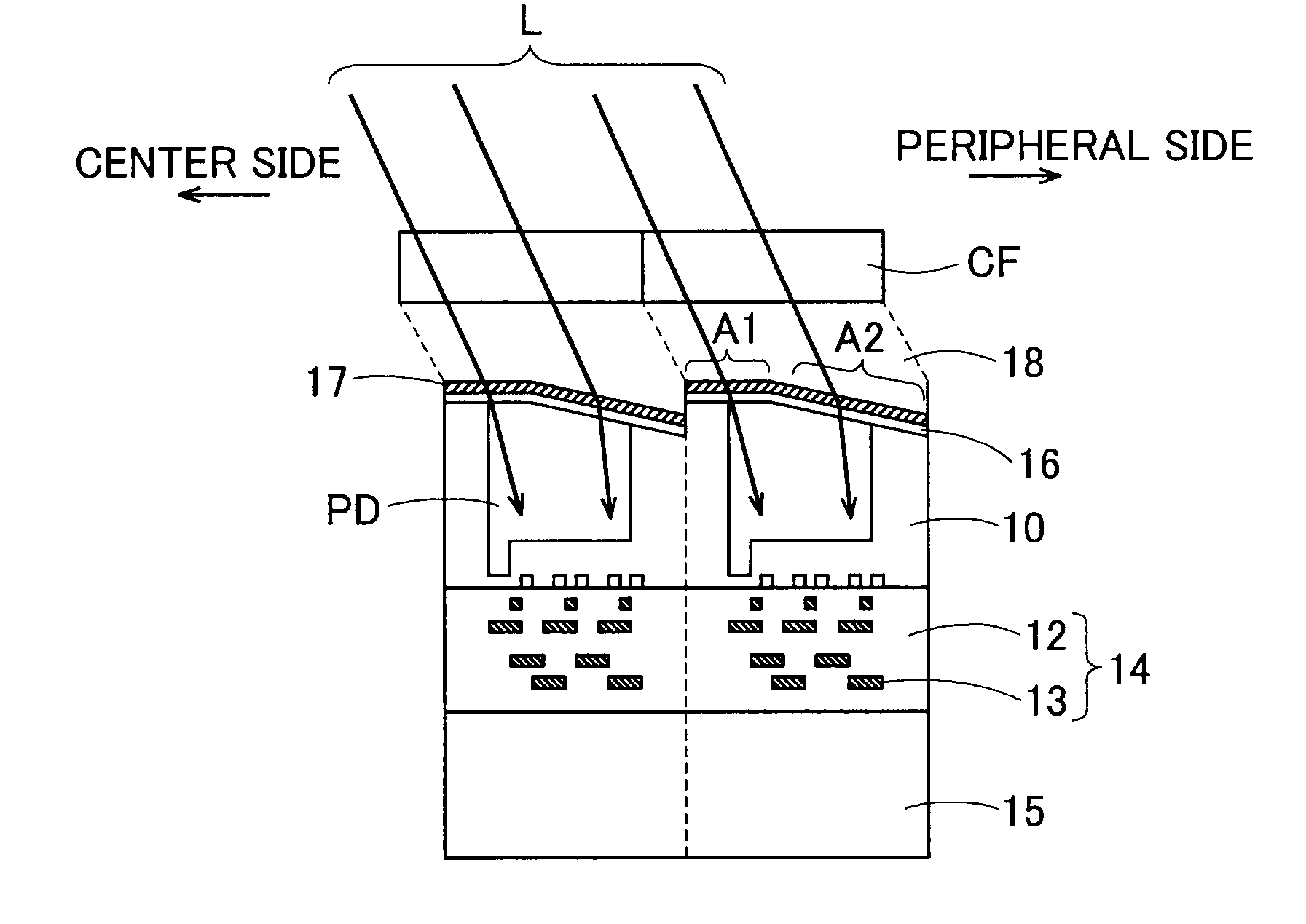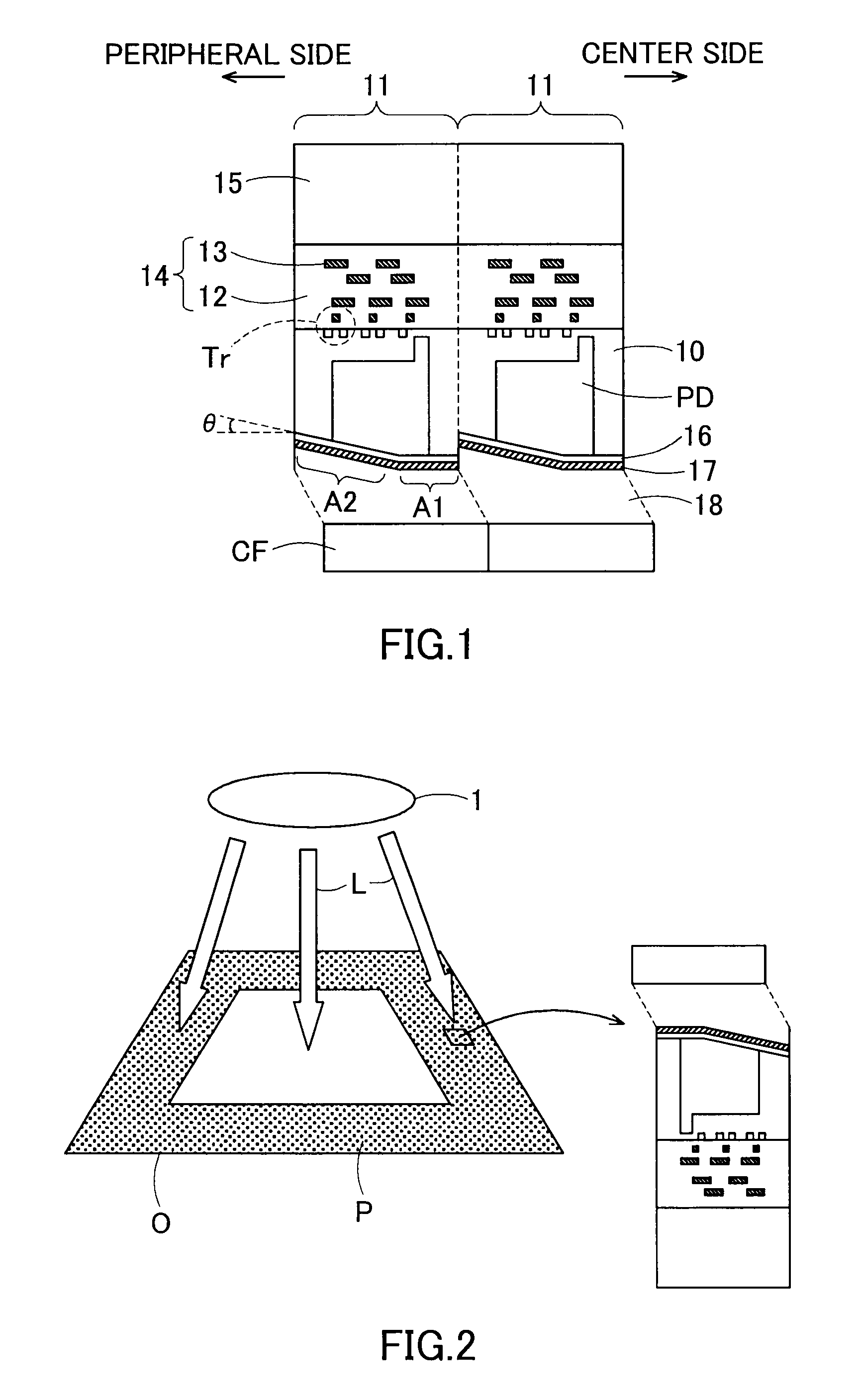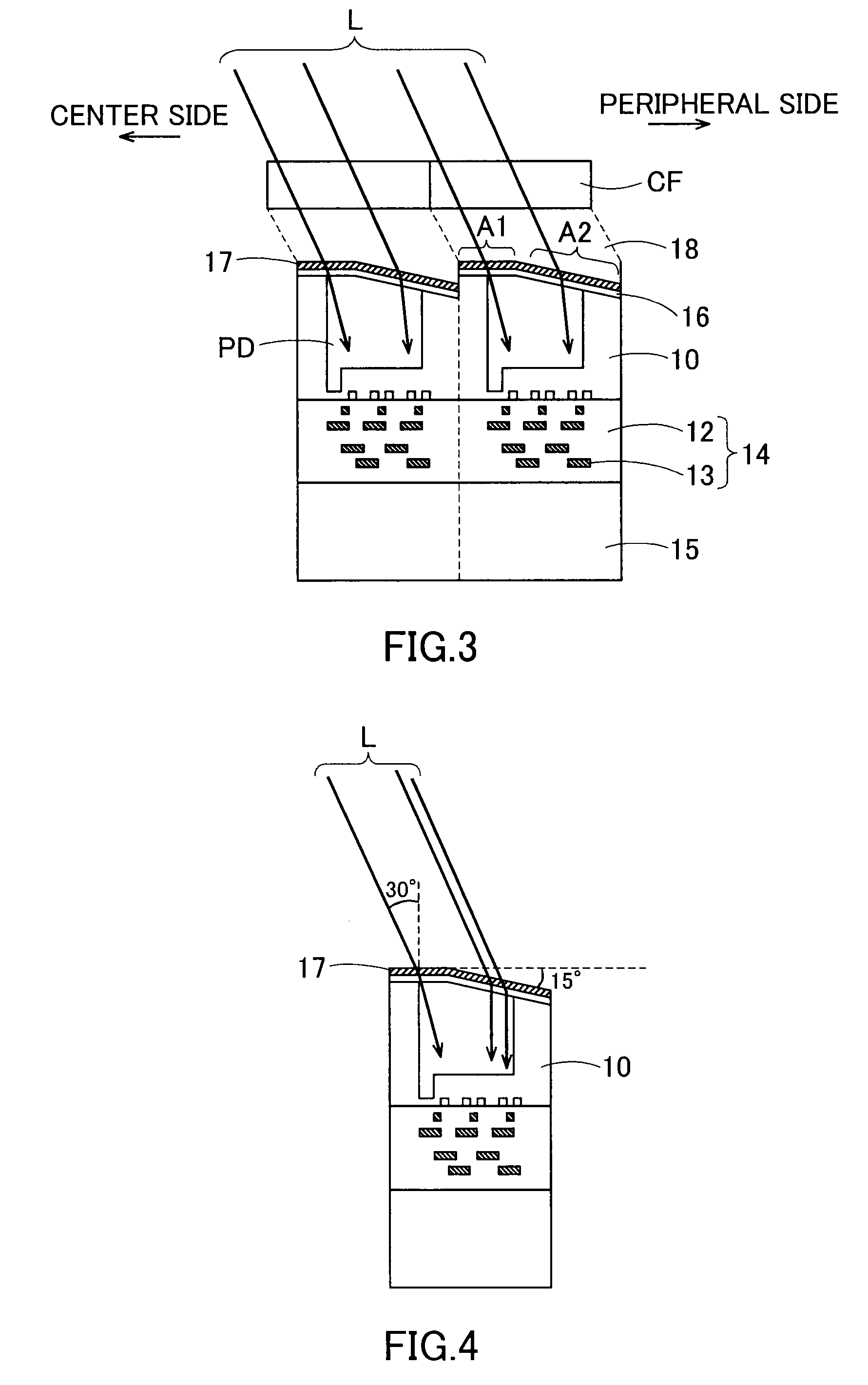Solid-state image pickup device
a solid-state image and pickup device technology, applied in the direction of television systems, picture signal generators, radioation control devices, etc., can solve the problems of mixing colors, difficult to obtain sufficient sensitivity, and difficulty in obtaining sufficient utilization efficiency of incident ligh
- Summary
- Abstract
- Description
- Claims
- Application Information
AI Technical Summary
Benefits of technology
Problems solved by technology
Method used
Image
Examples
Embodiment Construction
[0037]A solid-state image pickup device in an embodiment of the present invention will be described below on the basis of the drawings.
[0038]FIG. 1 shows a longitudinal sectional view of a solid-state image pickup device related to an embodiment of the present invention. The solid-state image pickup device related to this embodiment is a back side radiation type CMOS solid-state image pickup device.
[0039]In this solid-state image pickup device, upon a substrate 10, which is, for example, a silicon semiconductor substrate, there are formed in a matrix manner a plurality of unit pixels 11, each having a photodiode PD and a plurality of MOS transistors Tr, which become means of performing the reading-out, amplification, resetting and the like of a signal charge of this photodiode PD.
[0040]As shown in FIG. 2, a description will be given here of pixels in a peripheral part P of a pixel region O in which the incident angle of light L from an image optics system 1 is large.
[0041]Upon the f...
PUM
 Login to View More
Login to View More Abstract
Description
Claims
Application Information
 Login to View More
Login to View More - R&D
- Intellectual Property
- Life Sciences
- Materials
- Tech Scout
- Unparalleled Data Quality
- Higher Quality Content
- 60% Fewer Hallucinations
Browse by: Latest US Patents, China's latest patents, Technical Efficacy Thesaurus, Application Domain, Technology Topic, Popular Technical Reports.
© 2025 PatSnap. All rights reserved.Legal|Privacy policy|Modern Slavery Act Transparency Statement|Sitemap|About US| Contact US: help@patsnap.com



